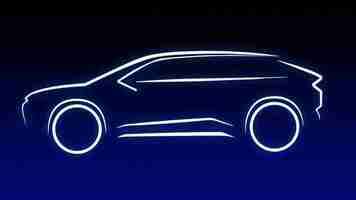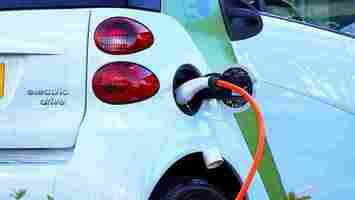Toyota’s first American battery EVs will launch later this year — taking the brand beyond hybrids
Japanese carmaker Toyota, known for its ever popular hybrid vehicles, is finally launching its first battery electric vehicles later this year in America.

Alongside the two BEVs, the company is also launching a new plug-in hybrid.
Sadly, that’s all the info we get from the latest announcement. Toyota seemed more keen in its announcement to bang on about the virtues of all-electric drivetrains and plug-in hybrids, than share more details of what we’ll get to drive next.
It’s a bit of a change of tune considering that the Japanese marque has rigidly stuck to hybrid tech, with a smattering of hydrogen on the side with its Mirai .
The main takeaway we have here, is that Toyota is finally bending over to what the world is asking for, and governments are demanding: battery powered cars.
If you want to read Toyota’s full announcement, click here to hear it from the horses mouth .
Toyota teased its upcoming battery electric vehicles last December , showing off nothing more than a couple of sketches and schematics.


The route to the future is becoming ever clearer for Toyota too.
Not long after talking about its American EVs for the first time, it announced that its solid state battery tech was going into testing . If all goes well, we should be seeing it in production vehicles by 2025.
Solid state batteries are promising the next step in EV tech. They promise good range, require less cooling, should last longer, and can charge faster.
No matter how hard it tries, Toyota won’t avoid the battery electric future.
SHIFT is brought to you by Polestar. It’s time to accelerate the shift to sustainable mobility. That is why Polestar combines electric driving with cutting-edge design and thrilling performance. Find out how .
Tesla’s making beer now — and that’s dangerous marketing
Over a week ago, at Tesla’s “Giga Fest” event in Berlin, on the site where the company is currently building its German Gigafactory, Elon Musk announced that Tesla is going to make its own… beer.

Echoing the “giga” spirit of the day, the beer is going to be called “Giga Beer” and “Giga Bier” (the German equivalent), and the bottle’s design is inspired by the futuristic lines and angles of the Cybertruck.
Here’s what our dear Elon said during the event:
Given that Musk likes to tease around with crazy ideas that add to his ‘cool engineer-entrepreneur’ profile, one would think that this was a joke.
But no, folks, in wasn’t.
Some days later, Tesla applied for trademark rights for both name versions at the United States Patent And Trademark Office (USPTO).
If you search on USPTO’s database you will find the following information:


So, yes, this is actually happening.
The fact that the beer bottles look as ugly as the Cybertruck isn’t my biggest issue here.
Nor I consider the “Giga Beer” the weirdest non-actual-car-related product an automaker has pushed.
Tesla itself currently sells a Zero Emissions (Almost) Onesie, y’know, for your average EV lover infant.
And let’s not forget the AudiOPOLY — yes, a MONOPOLY for Audi fans.
Or Mercedes’ life-sized Nico Rosberg wall sticker, for all those who wished to have the F1 champion intently staring at them while sleeping.
Yeah, no wonder that both stopped being sold rather fast.
What actually troubles me is that Tesla’s following a rather dangerous marketing strategy.
Having a car-themed beer is incredibly questionable, given that it’s not a really good idea to associate your car company with drinking.
And, as a matter of fact, this isn’t the first time Tesla is entering the venture of the alcohol business. Perhaps you remember the $250 Tesla Tequila, which was introduced in November 2020.
But while the “Giga Beer” or the Tesla Tequila may bring extra publicity to the company, the subconscious association between drinking and driving this strategy evokes may actually encourage reckless behavior. And this is nothing to joke about.
According to the National Highway Traffic Safety Administration (NTHSA), d rinking and driving kills 28 people a day in the US — about one person every 52 minutes. This means that more than 10,000 lives are lost each year and that drunk driving is responsible for about 1/3 of all traffic fatalities.
Don’t get me wrong here — I’m not implying that Tesla wishes to associate drinking and driving, the same way I don’t believe that it wants its consumers to misuse Autopilot .
But as the company’s marketing strategy regarding its Autopilot and its Full Self-Driving package has resulted in numerous driverless stunts , it’s not difficult to imagine future social media videos with titles such as “Drinking Tesla beer while driving my Tesla.”
So, yes, to put it in a broader perspective, I do believe that Tesla should more responsible when deciding on its marketing strategies.
Do EVs excite your electrons? Do ebikes get your wheels spinning? Do self-driving cars get you all charged up?
The pros and cons of EV batteries that fully charge in 5 minutes
Israeli company StoreDot recently announced it can now mass-produce electric vehicle batteries that can be fully charged in just five minutes . “The bottleneck to extra-fast charging is no longer the battery,” claimed the firm’s chief executive. But is this fast-charging battery really a game changer? And if so: exactly how?

Electric vehicle charging speeds are a minefield and can be tough to understand. The latest models claim peak charging rates of over 900 miles in an hour, but the average rate when charging from 10% to 80% of battery capacity is typically about half that . The last bit of the battery is surprisingly hard to “stuff:” beyond 80%, and outside normal operating temperatures, rapid charging slows dramatically.
Even if you understand the capability of your car and its battery, the rate of charging is also constrained by the capacity of the charger itself. The UK, for instance, only has a handful of what we regard today as “ultrafast” chargers capable of delivering over 100 kilowatts.
Most people drive well under 50 miles per day so, with modern electric cars capable of more than 200 miles on a single charge, they only need powering up once or twice a week. For the 60% or so of households with off-street parking, this can be done overnight during off-peak periods. Even if you fancy driving the entire length of the UK from Land’s End to John O’Groats, you could do it today with a 30-40 minute charging break every 2-3 hours .
For those who cannot home charge, there are already other options such as workplace charging or perhaps rapid charging during your weekly shop. There is little doubt that we could adopt electric vehicles without such high charging rates, but that relies on behavioral change when it comes to “filling up.” Five-minute charging removes a perceived barrier for many and makes electric vehicle adoption a much simpler choice for those without access to home charging.
Another significant benefit comes on longer journeys. For now, few people own electric cars and so it is rare to find rapid chargers occupied en route, but this is likely to change over time. Already, Tesla drivers leaving California at Thanksgiving can spend hours waiting for chargers – will similar bottlenecks pop up across the world as the rest of us catch up with the early adopters of Silicon Valley? Five-minute charging would reduce the number of rapid charge points required at a service station by a factor of ten, which would probably improve the economics too since rapid charge points are expensive. The hardware alone costs tens of thousands of dollars .
Higher charge rates may not necessarily imply the need for more network infrastructure at charging hubs, since there would be fewer cars charging simultaneously. However, StoreDot indicates adding 300 miles of range in five minutes, which suggests charge rates approaching 1 megawatt, three times the rate of the fastest chargers available today. This is a significant power demand and, as a result, you are unlikely to find such chargers on every street corner, or indeed, at every existing petrol station. The necessary substations and cables and so on are simply not there. Such high charging powers will also require a new design of car connector and potentially cooled cables, which will be bulky and hard to handle. Perhaps wireless charging will have to become the norm.
Can the grid handle superfast charging?
Electric vehicles have the potential to overload local networks, and sudden increases in demand can cause problems for power generators. When cars are predominantly charged overnight or on slower chargers during the day, as happens at present, these issues are relatively easy to manage. But if high-speed charging means commuters will power up their cars on their way to and from work, then this concentrated demand for electricity will coincide with existing peaks in demand. As intermittent renewable energy becomes more common, this could cause major problems for grid system operators, since no one can order the wind to blow or the Sun to shine in convenient morning and evening bursts.
As it stands, electric vehicles are seen as a potential means to manage this intermittency through controlled charging and even vehicle-to-grid , where car batteries can supply power back to the grid at times of low generation. Widespread adoption of rapid charging instead of home and work charging would reduce the opportunity for this type of system management.
Fast charging batteries could also reduce the environmental impact of cars and other battery devices. For most drivers, who only occasionally do long journeys, a car with a smaller, lighter battery, which will also be more efficient and cheaper, may be more attractive since there will be less inconvenience from charging stops. This could also have beneficial implications for other battery uses: perhaps you don’t need two batteries for your power tools if you can recharge in just one minute?
Ultimately, this could mean fewer batteries are needed and thus less environmental damage from extracting the materials and manufacturing them. While five-minute charging is not a complete game changer, it makes the transition to electric vehicles an easier sell.
This article by Rachel Lee , PhD Candidate, Electric Vehicles, University of Sheffield and Solomon Brown , Senior Lecturer in Chemical Engineering, University of Sheffield is republished from The Conversation under a Creative Commons license. Read the original article .
SHIFT is brought to you by Polestar. It’s time to accelerate the shift to sustainable mobility. That is why Polestar combines electric driving with cutting-edge design and thrilling performance. Find out how .